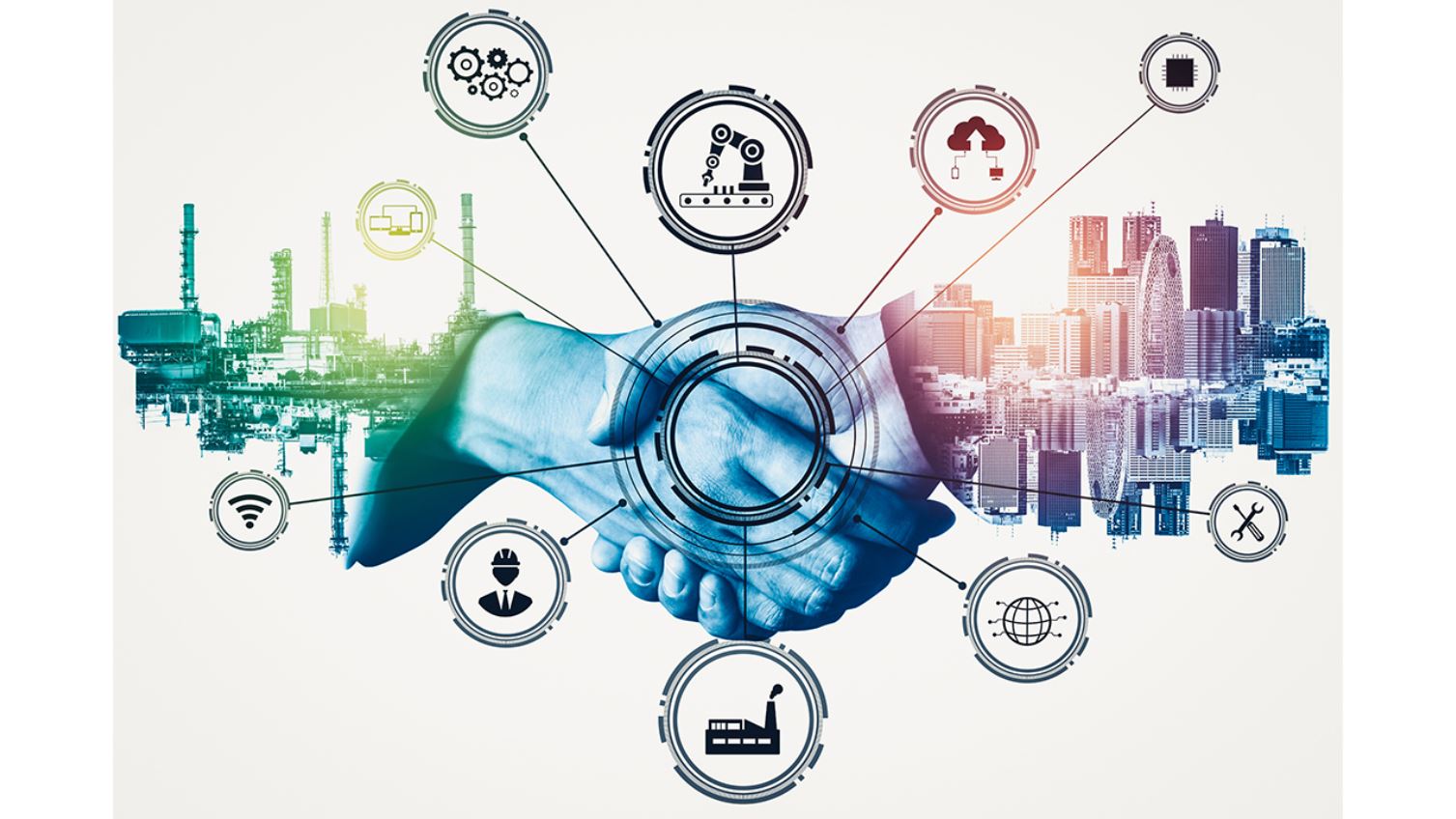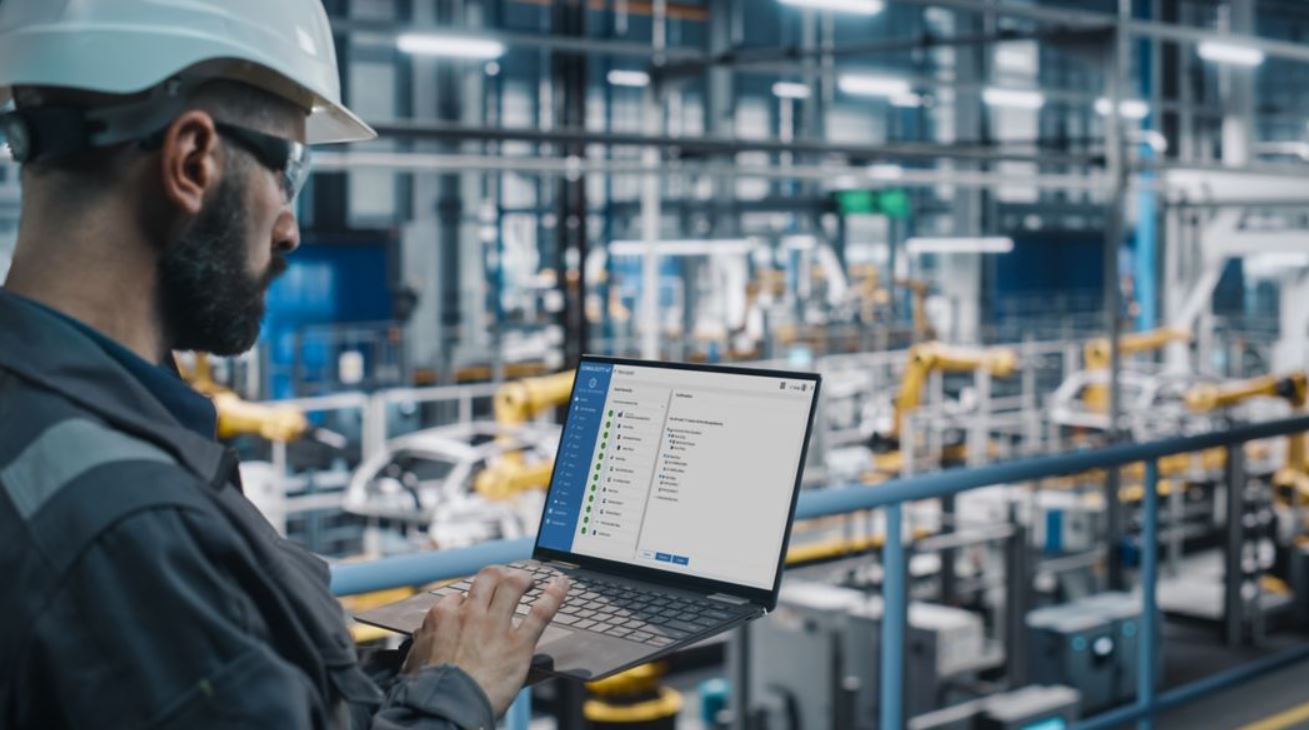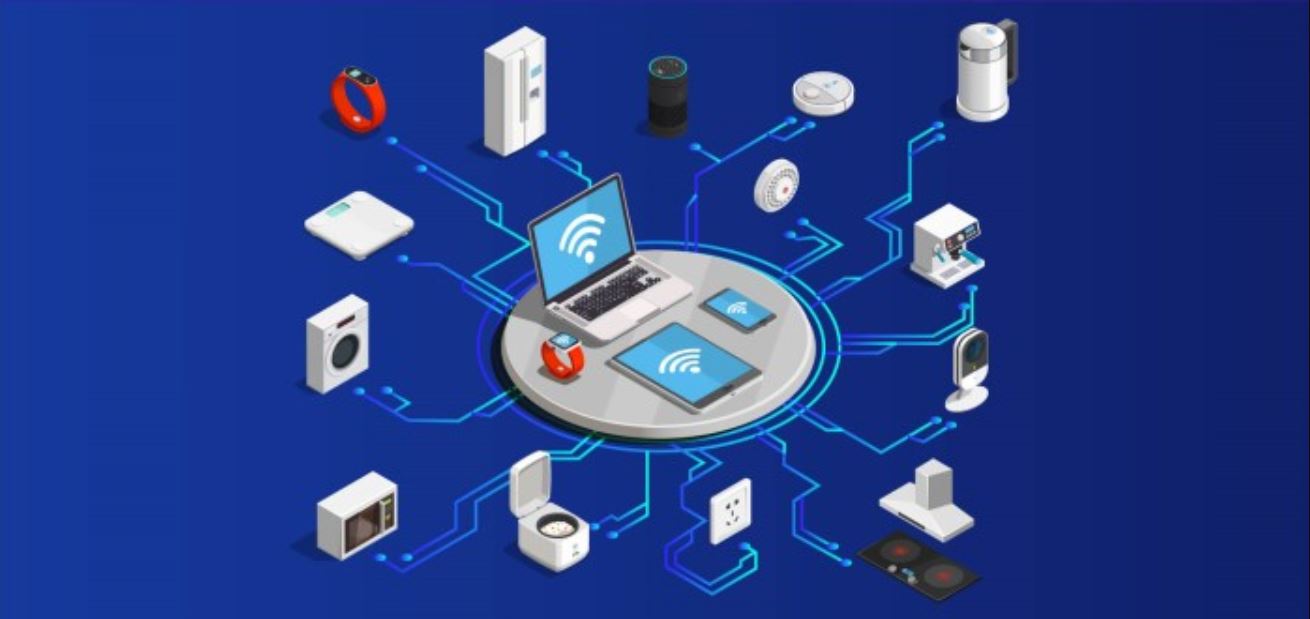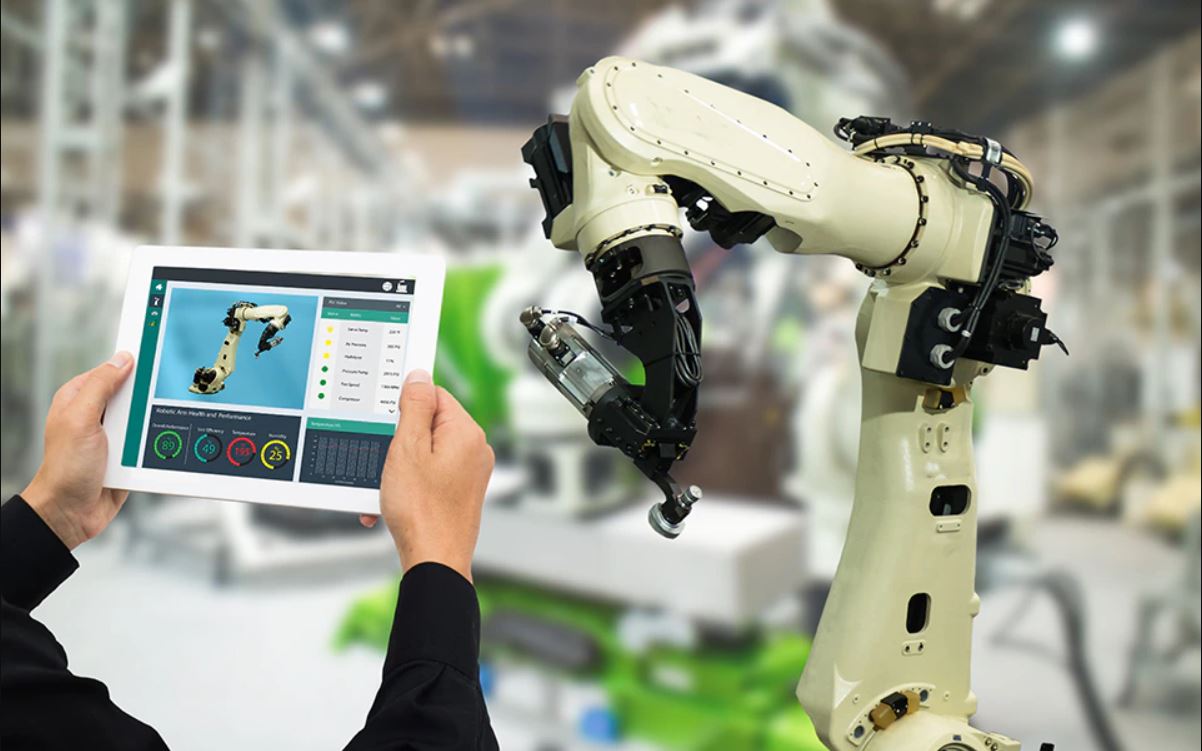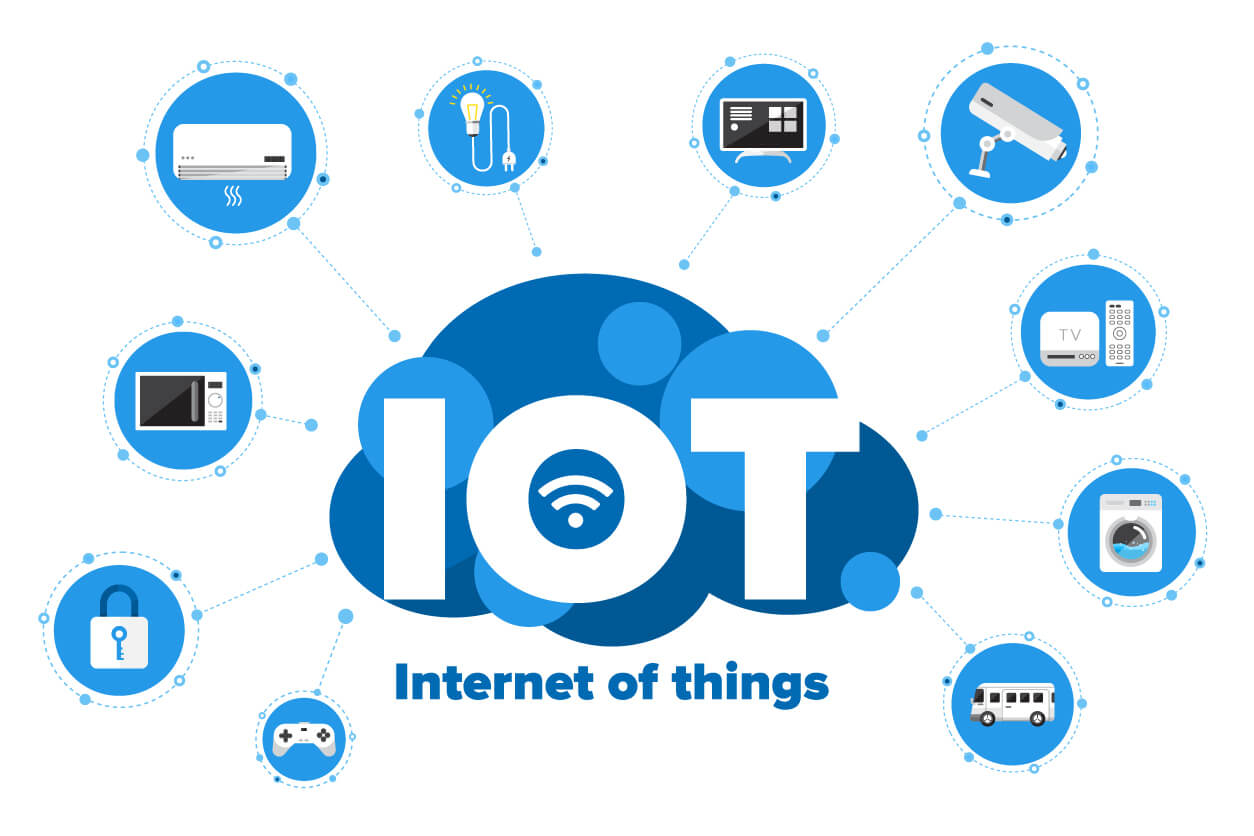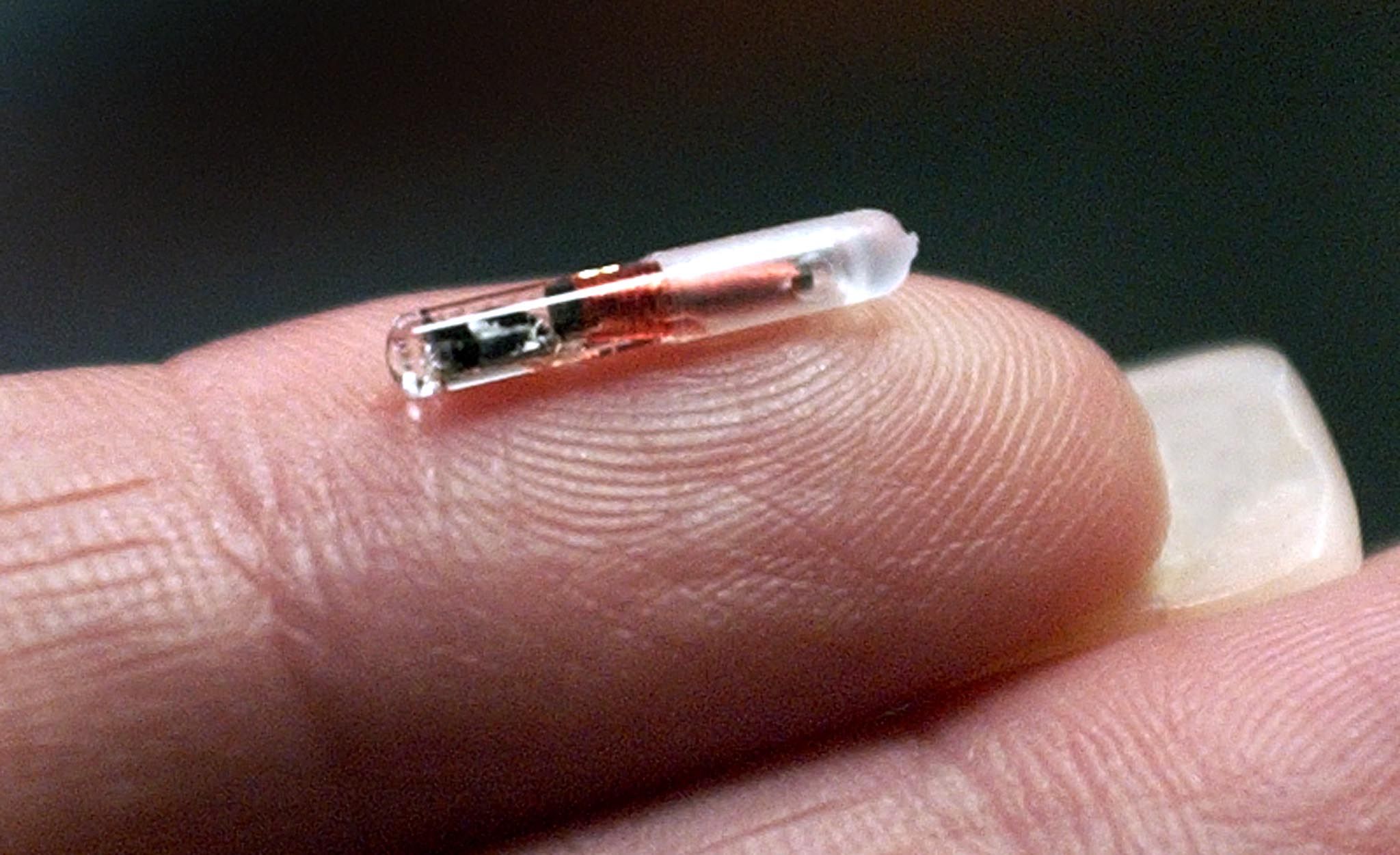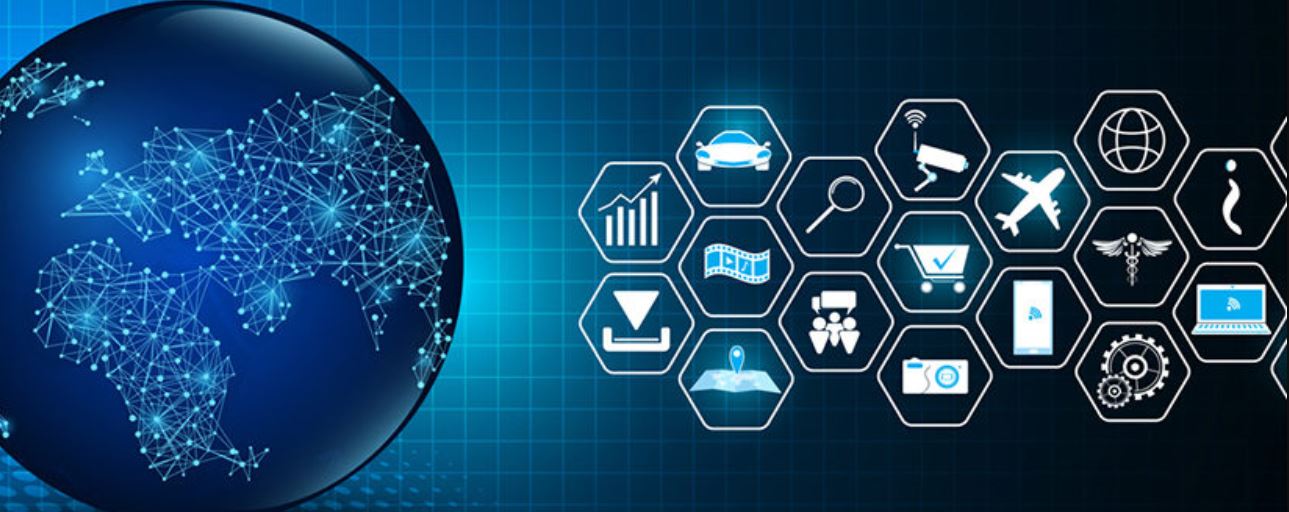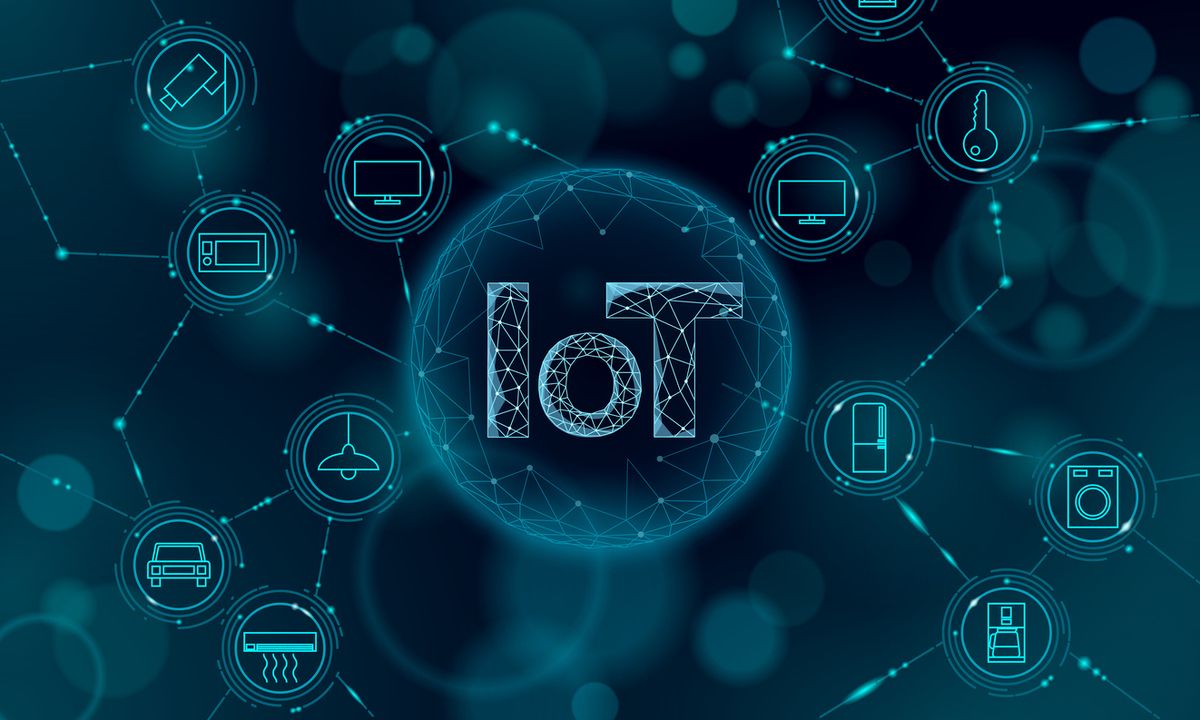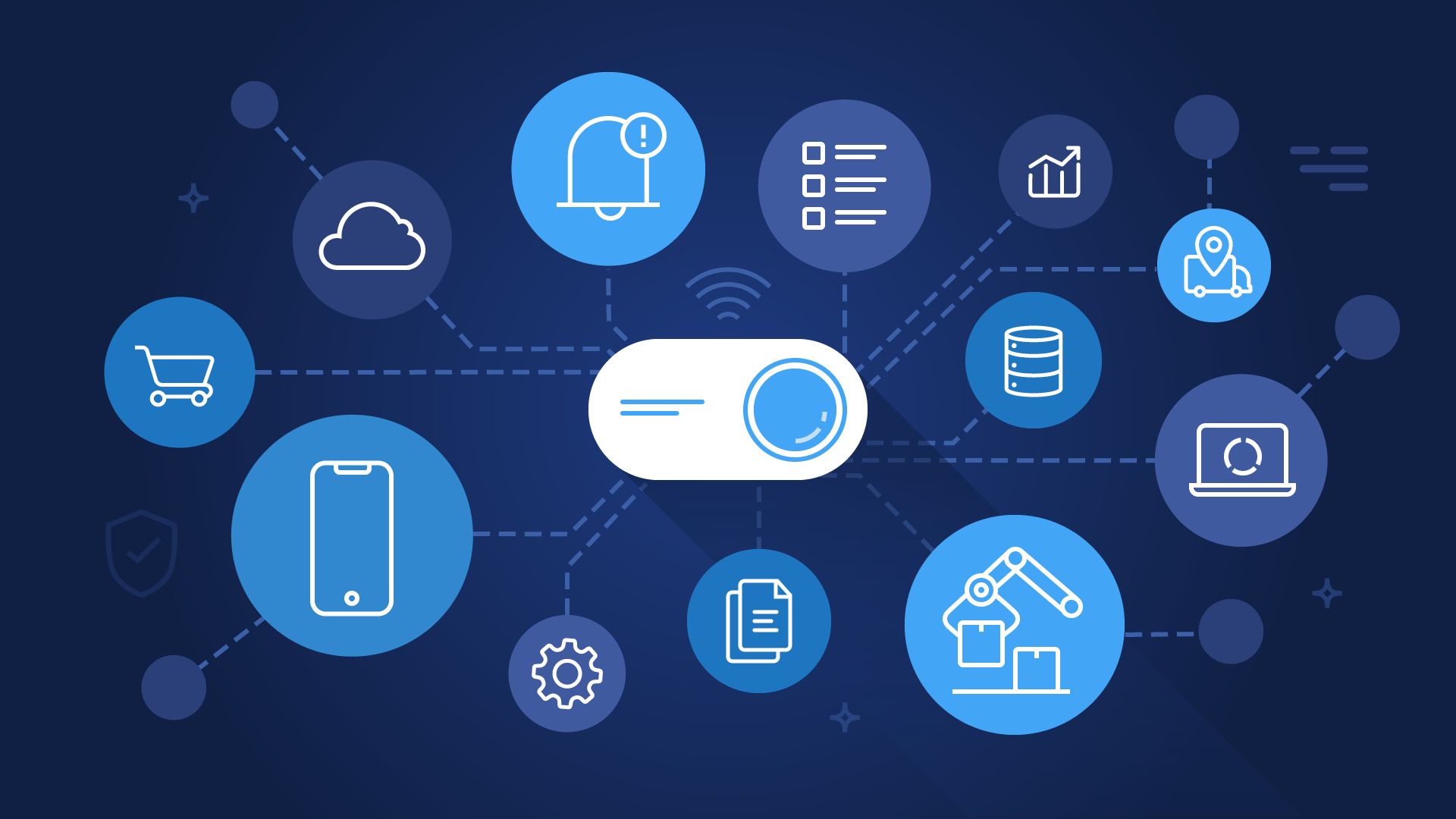Introduction
The Internet of Things (IoT) has revolutionized various industries, and the supply chain sector is no exception. With the integration of IoT technologies, the supply chain has become more efficient, transparent, and responsive. IoT in supply chain management refers to the use of interconnected devices and sensors to collect and transmit data in real-time, enabling better decision-making and optimization of operations.
Traditionally, supply chain management relied heavily on manual processes, leading to inefficiencies and delays. However, with the advent of IoT, supply chain managers now have access to a wealth of real-time information, enabling them to make proactive decisions and streamline their operations.
In this article, we will explore the definition of IoT in the supply chain and delve into its numerous benefits and applications. We will also discuss the challenges associated with implementing IoT in the supply chain and potential solutions to overcome them.
By harnessing the power of IoT, businesses can optimize their supply chain processes, improve visibility, and enhance overall efficiency. Now, let’s take a closer look at how IoT is transforming the supply chain sector.
Definition of IoT
The Internet of Things (IoT) refers to the network of interconnected physical devices, vehicles, appliances, and sensors that have the ability to collect and exchange data. These devices communicate with each other over the internet, enabling them to share information and perform tasks without human intervention.
In the context of the supply chain, IoT involves the integration of smart devices and sensors throughout the entire process, from production to distribution. These devices gather data at various touchpoints, such as inventory management, transportation, and warehouse operations.
At its core, IoT in the supply chain enables the seamless flow of information and facilitates communication between different stakeholders, including suppliers, manufacturers, distributors, and customers. Through real-time data collection and analysis, IoT empowers businesses to make data-driven decisions, automate processes, and optimize their operations.
The key components of IoT in the supply chain include:
- Sensors and Devices: These are embedded in physical assets such as products, vehicles, and machinery. They collect and transmit data related to temperature, humidity, location, and usage.
- Connectivity: IoT devices are connected to the internet through technologies such as Wi-Fi, Bluetooth, or cellular networks. This enables them to transmit data to centralized systems for processing and analysis.
- Data Analytics: The collected data is processed and analyzed using advanced algorithms and machine learning techniques. This helps identify patterns, trends, and anomalies, providing valuable insights for decision-making.
- Actionable Insights: The analyzed data is used to drive actionable insights and trigger automated actions. This can range from optimizing inventory levels to predicting maintenance requirements.
Overall, IoT in the supply chain empowers businesses with real-time visibility, enhanced collaboration, and improved operational efficiency. By harnessing the power of connected devices and data analytics, organizations can transform their supply chain into a highly responsive and streamlined system.
Benefits of IoT in Supply Chain
The integration of IoT in the supply chain brings numerous benefits that can positively impact businesses and their bottom line. Let’s explore some of the key advantages:
- Improved Operational Efficiency: IoT enables real-time monitoring of assets, equipment, and inventory levels, allowing businesses to identify inefficiencies and bottlenecks. With this information, supply chain managers can optimize processes, reduce lead times, and improve resource allocation.
- Enhanced Visibility: IoT provides end-to-end visibility of the supply chain, allowing businesses to track the movement of goods, monitor inventory levels, and identify potential disruptions. This visibility enables proactive decision-making and better customer service.
- Optimized Inventory Management: IoT sensors can monitor stock levels in real-time, triggering automatic replenishment when inventory falls below a certain threshold. This eliminates the need for manual inventory checks and reduces the risk of stockouts or overstocking.
- Streamlined Warehouse Operations: IoT devices, combined with RFID technology, can automate and improve warehouse operations. They can track the location and movement of goods within the warehouse, optimize storage space, and enable efficient picking and packing processes.
- Improved Asset Utilization: IoT sensors can monitor the health and performance of machinery and equipment in real-time. This data allows for predictive maintenance, reducing downtime and maximizing the utilization of assets.
- Enhanced Supply Chain Collaboration: IoT fosters seamless communication and collaboration between stakeholders in the supply chain. Real-time data sharing enables better coordination, synchronization, and improved decision-making across different departments and organizations.
- Increased Customer Satisfaction: IoT enables businesses to provide accurate, real-time information to customers regarding the status and location of their orders. This transparency and visibility enhance customer satisfaction and build trust.
These benefits highlight the transformative power of IoT in the supply chain. By leveraging IoT technologies, businesses can achieve higher operational efficiency, reduce costs, and gain a competitive edge in today’s fast-paced business environment.
Applications of IoT in Supply Chain
The applications of IoT in the supply chain are vast and far-reaching, revolutionizing various aspects of the process. Let’s explore some of the key applications:
- Inventory Management: IoT sensors can be used to track and monitor inventory levels in real-time. This enables businesses to automate inventory replenishment, optimize stock levels, and reduce the risk of stockouts or excess inventory.
- Warehouse Optimization: IoT devices, combined with technologies such as RFID, can provide real-time visibility and tracking of goods within warehouses. This helps optimize storage space, improve inventory accuracy, and streamline picking and packing processes.
- Fleet Management and Tracking: IoT enables businesses to track the location, condition, and performance of vehicles and transportation assets in real-time. This allows for efficient route planning, optimized delivery schedules, and improved overall fleet management.
- Predictive Maintenance: IoT sensors can monitor the health and performance of machinery and equipment. By collecting and analyzing data related to usage, performance, and maintenance history, businesses can predict and prevent equipment failures, reducing downtime and optimizing maintenance schedules.
- Supply Chain Visibility: IoT provides end-to-end visibility of the supply chain. Businesses can track the movement of goods, monitor environmental conditions, and identify potential bottlenecks or disruptions. This visibility enables proactive decision-making, improved risk management, and better customer service.
- Quality Control and Traceability: IoT sensors can monitor and record data related to product quality and condition throughout the supply chain journey. This ensures compliance with quality standards, enables traceability, and enhances product safety and accountability.
- Demand Sensing and Forecasting: IoT data, combined with advanced analytics, can provide insights into customer behavior, demand patterns, and market trends. This enables businesses to make accurate demand forecasts, optimize production schedules, and align inventory levels with customer demand.
These applications of IoT in the supply chain highlight its potential to transform operations, enhance visibility, and improve overall efficiency. By harnessing the power of IoT technologies, businesses can gain a competitive edge and meet the ever-increasing demands of today’s dynamic market.
Inventory Management
Effective inventory management is crucial for supply chain success, and IoT plays a significant role in optimizing this process. IoT sensors and devices enable real-time tracking and monitoring of inventory levels, ensuring accurate visibility and proactive decision-making.
One of the key challenges in inventory management is maintaining optimal stock levels. Understocking leads to stockouts and dissatisfied customers, while overstocking ties up capital and increases holding costs. IoT addresses this challenge by providing real-time data on inventory levels, enabling businesses to automate replenishment processes and maintain optimal stock levels.
IoT devices can monitor inventory levels, automatically sending alerts when they fall below a predetermined threshold. This triggers replenishment orders, ensuring that stock is refilled before it reaches critical levels. By automating this process, businesses can reduce the risk of stockouts, improve customer satisfaction, and streamline supply chain operations.
Furthermore, IoT devices can provide insights into inventory movement and location. By accurately tracking and managing the movement of goods within the warehouse, businesses can optimize storage space utilization and minimize handling errors. IoT sensors can also detect and alert to inventory discrepancies or theft, providing an added layer of security.
Another benefit of IoT in inventory management is the ability to monitor environmental conditions. For example, in the food and pharmaceutical industries, temperature and humidity sensors can ensure that perishable goods are stored within the required conditions. If there are any deviations, alerts can be sent to appropriate personnel for corrective actions.
Overall, IoT revolutionizes inventory management by providing real-time visibility, predictive analysis, and automated processes. By leveraging IoT technologies, businesses can improve inventory accuracy, reduce operational costs, and enhance customer satisfaction.
Warehouse Optimization
Warehouse optimization is a critical aspect of supply chain management, and IoT technologies have proven to be instrumental in streamlining warehouse operations. By leveraging IoT devices and sensors, businesses can achieve greater efficiency, accuracy, and productivity in their warehouses.
One of the key benefits of IoT in warehouse optimization is real-time visibility. IoT devices, combined with technologies such as RFID (Radio Frequency Identification), enable businesses to track the location and movement of goods within the warehouse. This allows for efficient inventory management, as staff can quickly locate items, monitor stock levels, and update inventory records in real-time.
IoT devices can also optimize storage space utilization. By monitoring and analyzing warehouse data, businesses can identify underutilized areas and make informed decisions about rearranging goods or implementing automated storage and retrieval systems (AS/RS) to maximize space efficiency.
Furthermore, IoT devices can improve picking and packing processes by providing real-time guidance and instructions to warehouse personnel. Wearable devices, such as smart glasses or bracelets, can guide workers to the exact location of items, reducing search time and minimizing errors. IoT devices can also validate and verify picks, ensuring accuracy before items are packed and shipped.
Another application of IoT in warehouse optimization is equipment monitoring and maintenance. IoT sensors can monitor the condition and performance of machinery and equipment, providing real-time data on their usage, health, and maintenance needs. This enables businesses to implement predictive maintenance, detecting potential issues before they cause downtime or breakdowns. By staying ahead of maintenance requirements, businesses can reduce costs, minimize disruptions, and optimize equipment utilization.
Overall, IoT-driven warehouse optimization enhances accuracy, efficiency, and productivity. With real-time visibility, efficient storage utilization, optimized picking and packing processes, and proactive equipment maintenance, businesses can expedite order fulfillment, improve customer satisfaction, and achieve cost savings in their warehousing operations.
Fleet Management and Tracking
Fleet management is a critical component of supply chain operations, and IoT technologies provide valuable tools for tracking and optimizing the performance of vehicles and transportation assets. By leveraging IoT devices and sensors, businesses can enhance fleet visibility, improve efficiency, and ensure timely delivery.
One of the key benefits of IoT in fleet management is real-time tracking. IoT devices, such as GPS trackers, can provide accurate and up-to-date information on the location of vehicles. This enables businesses to monitor the progress of deliveries, optimize routes, and provide customers with accurate estimated arrival times.
IoT devices can also collect and transmit data on various vehicle parameters, such as speed, fuel consumption, and engine performance. This allows businesses to analyze and optimize fleet operations, identify opportunities for fuel efficiency, and reduce maintenance costs. By monitoring driver behavior, businesses can also encourage safe driving practices and reduce the risk of accidents.
Furthermore, IoT devices can help with proactive maintenance and ensure that vehicles are in optimal condition. Sensors can detect any abnormalities or potential malfunctions, providing early warning signs for maintenance needs. By implementing predictive maintenance based on real-time data, businesses can minimize breakdowns, avoid costly repairs, and reduce downtime.
Another benefit of IoT in fleet management is improved asset utilization. IoT devices can monitor the utilization of vehicles, ensuring that they are deployed efficiently and effectively. By analyzing data on usage patterns, businesses can optimize and allocate resources based on demand, reducing idle time and maximizing fleet productivity.
IoT also enables businesses to automate various administrative tasks related to fleet management. For example, IoT devices can automatically collect data on vehicle mileage, fuel consumption, and maintenance history, streamlining record-keeping and reporting processes. This reduces manual paperwork, saves time, and enhances overall operational efficiency.
In summary, IoT-based fleet management and tracking offer significant benefits, including real-time visibility, optimized routes, proactive maintenance, enhanced asset utilization, and automation of administrative tasks. By harnessing the power of IoT technologies, businesses can optimize their fleet operations, reduce costs, and provide better customer service through efficient and reliable transportation.
Predictive Maintenance
Predictive maintenance is a crucial aspect of supply chain management, and IoT technologies play a vital role in optimizing maintenance processes. By leveraging IoT devices and sensors, businesses can move from reactive maintenance to a proactive approach, reducing downtime, minimizing costs, and optimizing asset performance.
Traditionally, maintenance activities in the supply chain were scheduled based on fixed time intervals or when breakdowns occurred. This approach often resulted in unnecessary maintenance or unexpected equipment failures. However, IoT-enabled predictive maintenance allows businesses to monitor the condition and performance of assets in real-time, enabling data-driven decisions and proactive maintenance actions.
IoT sensors collect and transmit data on various parameters, such as temperature, vibration, pressure, energy consumption, and usage patterns. This data is then analyzed using advanced algorithms and machine learning techniques to identify patterns, anomalies, and potential issues.
Predictive maintenance uses this analyzed data to predict when maintenance is required, allowing businesses to schedule maintenance activities before a breakdown occurs. By addressing potential issues in advance, businesses can reduce unexpected downtime, extend the lifespan of assets, and optimize maintenance schedules to minimize disruptions.
Moreover, IoT-based predictive maintenance helps optimize maintenance resources and reduce costs. By proactively identifying maintenance needs, businesses can ensure that the right resources, such as spare parts and skilled technicians, are available when needed. This eliminates unnecessary maintenance activities and reduces the cost of emergency repairs.
Another benefit of predictive maintenance is the ability to implement condition-based or performance-based maintenance. Instead of relying on fixed time intervals, maintenance can be scheduled based on the actual condition or performance of the asset. For example, if a sensor indicates that a piece of machinery is operating outside of defined parameters, maintenance can be scheduled to prevent a potential failure.
Overall, IoT-driven predictive maintenance enables businesses to move from a reactive to a proactive maintenance approach. By leveraging real-time data and advanced analytics, businesses can reduce downtime, optimize maintenance schedules, and improve asset performance, ultimately leading to cost savings and increased reliability in the supply chain.
Supply Chain Visibility
Supply chain visibility is a critical aspect of supply chain management, and IoT technologies have revolutionized the way businesses gain insight into their operations. By leveraging IoT devices and sensors, businesses can achieve end-to-end visibility, enabling them to make data-driven decisions, proactively respond to disruptions, and enhance overall efficiency.
Traditional supply chains often suffer from a lack of visibility, with limited information on the movement of goods, inventory levels, and production status. However, IoT-driven supply chain visibility provides real-time data on various touchpoints, enabling businesses to track and monitor the flow of goods from suppliers to customers.
With IoT devices, businesses can track the movement of goods at every stage of the supply chain, from production and warehousing to transportation and delivery. This visibility allows for better coordination, synchronization, and optimization of processes, ultimately improving the overall efficiency of the supply chain.
Furthermore, IoT sensors can monitor various environmental conditions, such as temperature, humidity, and vibration, throughout the supply chain journey. This information is critical for industries dealing with perishable goods, pharmaceuticals, or sensitive electronic components. Any deviations from optimal conditions can be detected in real-time, triggering immediate corrective actions to maintain product quality and integrity.
IoT also enables businesses to gain visibility into inventory levels and stock movements. By integrating IoT sensors with inventory management systems, businesses can monitor real-time inventory data, automate replenishment processes, and minimize stockouts or overstocking. This visibility allows for better demand planning, improved inventory accuracy, and reduced holding costs.
In addition, IoT provides visibility into transportation and logistics operations. With real-time tracking of vehicles, businesses can monitor delivery progress, optimize routes, and provide accurate estimated arrival times to customers. This visibility allows for proactive response to disruptions, such as traffic congestion or unexpected delays, to minimize the impact on the supply chain.
Overall, IoT-driven supply chain visibility enables businesses to make informed decisions, improve operational efficiency, and enhance customer satisfaction. With real-time data on inventory, production, transportation, and environmental conditions, businesses can detect and address issues proactively, optimize processes, and ensure a seamless flow of goods throughout the supply chain.
Challenges of Implementing IoT in the Supply Chain
While IoT offers numerous benefits in supply chain management, there are several challenges that businesses may face when implementing these technologies. It is important to be aware of these challenges and address them effectively to ensure a successful IoT integration. Let’s explore some of the key challenges:
- Security and Privacy Concerns: IoT devices collect and transmit sensitive data, making them potential targets for cyber attacks. Businesses must implement robust security measures to protect the IoT infrastructure and ensure the privacy and integrity of data.
- Integration with Existing Systems: Implementing IoT in an existing supply chain infrastructure can be complex. It requires seamless integration with existing systems, such as inventory management or transportation management systems, to ensure the smooth flow of data and processes.
- Scalability: Scaling IoT solutions across a large supply chain network can be a challenge. Businesses need to ensure that the infrastructure can support a large number of IoT devices, handle increased data volumes, and maintain connectivity and performance.
- Data Management and Analytics: IoT generates vast amounts of data. Businesses need robust data management systems and analytical capabilities to process and derive meaningful insights from the data collected by IoT devices.
- Reliability and Maintenance: The reliability and maintenance of IoT devices are crucial for their effectiveness. Ensuring that devices are always operational, batteries are regularly replaced, and firmware/software updates are implemented can be a challenge in large-scale deployments.
- Staff Training and Skills: Implementing IoT requires trained personnel who are proficient in managing IoT devices, analyzing IoT-generated data, and troubleshooting any issues that may arise. Businesses need to invest in training and upskilling their workforce to leverage IoT effectively.
- Cost of Implementation: Implementing IoT can involve significant upfront costs, including the purchase of devices, installation, and infrastructure upgrades. Businesses need to evaluate the cost-benefit ratio and ensure that the return on investment justifies the expenses involved.
Overcoming these challenges requires proper planning, collaboration with technology partners, and a strategic approach. By addressing these challenges effectively, businesses can unlock the full potential of IoT in the supply chain and reap the benefits of improved efficiency, visibility, and responsiveness.
Security and Privacy Concerns
While IoT technologies offer significant advantages in the supply chain, one of the main challenges that businesses face is ensuring the security and privacy of IoT devices and the data they collect. Implementing robust security measures is essential to protect against cyber threats and maintain the integrity of the supply chain ecosystem.
One of the primary concerns is the vulnerability of IoT devices to cyber attacks. As these devices are connected to the internet, they are potential targets for hackers who can exploit vulnerabilities to gain unauthorized access or manipulate the data being transmitted. This poses a significant risk to the integrity and reliability of the supply chain operations.
To mitigate security risks, businesses must implement strong authentication mechanisms, including unique login credentials and encryption protocols, to ensure that only authorized individuals can access IoT devices and the data they collect. Implementing secure firmware and regularly patching and updating software on IoT devices is also vital to address any known vulnerabilities.
Privacy is another critical concern when it comes to IoT in the supply chain. As IoT devices collect data about inventory, products, and even customer information, it is crucial to ensure that data is collected, stored, and transmitted in compliance with privacy regulations and industry standards.
To address privacy concerns, businesses must establish robust data governance policies and procedures. This includes obtaining informed consent from individuals whose data is collected, anonymizing sensitive information, and implementing strong data encryption during transmission and storage. Businesses should also conduct regular audits and assessments to ensure compliance with privacy regulations and identify any potential risks.
Furthermore, it is essential to secure the communication channels between IoT devices and the central systems to prevent unauthorized access and data breaches. Implementing secure communication protocols, such as Secure Sockets Layer (SSL) or Transport Layer Security (TLS), along with firewall protection and intrusion detection systems, can help protect against unauthorized access and data breaches.
Education and awareness are also crucial in addressing security and privacy concerns. Businesses must train their personnel on best practices for IoT security, including password management, identifying phishing attempts, and recognizing potential security risks. Regular security awareness programs can help mitigate the human factor in potential security breaches.
By addressing security and privacy concerns head-on and implementing robust security measures, businesses can ensure the integrity and confidentiality of data collected by IoT devices in the supply chain. This enables businesses to fully leverage the benefits of IoT while minimizing the risks associated with cyber threats and privacy breaches.
Integration with Existing Systems
When implementing IoT in the supply chain, one of the key challenges that businesses face is integrating IoT solutions with existing systems and infrastructure. Seamless integration is essential to ensure the smooth flow of data and processes, enabling businesses to fully leverage the benefits of IoT.
Many businesses already have established systems in place, such as inventory management, warehouse management, and transportation management systems. These systems capture and analyze data related to supply chain operations and play a critical role in managing day-to-day activities.
To integrate IoT with existing systems, businesses need to ensure compatibility and interoperability between IoT devices and the existing infrastructure. This involves identifying the data needs and requirements of the existing systems and establishing proper interfaces or APIs (Application Programming Interfaces) to enable seamless data exchange.
One common approach to integration is to leverage IoT platforms that provide standardized APIs and protocols for connecting IoT devices to existing systems. These platforms act as intermediaries, facilitating communication and data exchange between IoT devices and the existing infrastructure.
Additionally, businesses need to ensure that the IoT data collected is compatible with the format and structure required by the existing systems. This may involve data transformation, mapping, or the use of middleware solutions to bridge the gap between IoT data and the requirements of the existing systems.
Another aspect of integration is ensuring that the IoT data is integrated into the existing analytics and reporting mechanisms. Businesses should consider how to incorporate IoT-generated data into their data analytics processes to gain insights and make informed decisions.
Businesses also need to address any potential challenges related to connectivity and network infrastructure. IoT devices rely on stable and reliable internet connections to transmit data. Ensuring network coverage, bandwidth capacity, and data transmission stability is crucial for seamless integration.
Lastly, integration requires thorough planning and testing to ensure that the implemented IoT solutions and the existing systems work together harmoniously. This may involve conducting pilot projects, running simulations, and performing compatibility tests to identify and iron out any potential issues before fully deploying the integrated system.
By proactively addressing integration challenges, businesses can successfully integrate IoT solutions with their existing systems, maximizing the value derived from both. Seamless data exchange, compatibility, and interoperability enable businesses to harness the power of IoT while maintaining the efficiency and effectiveness of their existing supply chain infrastructure.
Cost of Implementation
Implementing IoT technologies in the supply chain can involve significant upfront costs, and businesses need to carefully evaluate the cost implications and potential return on investment. While IoT offers numerous benefits, it is essential to consider the cost of implementation to ensure its feasibility and long-term sustainability.
One of the primary cost considerations is the procurement and installation of IoT devices and sensors. The cost can vary depending on the type and quantity of devices required, as well as the complexity of the supply chain infrastructure. Businesses need to assess the upfront investment required to acquire and deploy IoT devices in their operations.
Additionally, businesses should consider the cost of infrastructure upgrades or modifications necessary to support the IoT implementation. This may include enhancing network connectivity, installing gateways or access points, or implementing data storage and processing capabilities to handle the increased data volumes generated by IoT devices.
Another cost aspect is the integration of IoT solutions with existing systems. Businesses may need to invest in software development, customizations, or middleware solutions to ensure seamless data exchange and compatibility between IoT devices and the existing infrastructure. Integration costs can vary depending on the complexity of the systems and the level of customization required.
Training and upskilling staff to effectively manage and utilize IoT technologies also incur costs. Businesses may need to invest in training programs to ensure that personnel have the necessary skills to operate and maintain the IoT devices and leverage the insights generated through IoT data analytics.
Moreover, ongoing operational costs should be taken into account. This includes the cost of data storage, cloud services, maintenance and support, and potential subscription fees for IoT platforms or software. Factoring in these costs is crucial to ensure that the benefits derived from IoT technologies outweigh the ongoing expenses.
Despite these cost considerations, businesses should also weigh the potential return on investment (ROI) and long-term benefits that IoT can bring to the supply chain. IoT can lead to cost savings through improved operational efficiency, reduced downtime, optimized asset utilization, and better inventory management.
It is important for businesses to conduct a comprehensive cost-benefit analysis before implementing IoT in the supply chain. By carefully evaluating the costs involved, identifying potential savings, and estimating the ROI, businesses can make informed decisions about the feasibility and timing of IoT implementation in their specific supply chain context.
Conclusion
The integration of IoT technologies in the supply chain has the potential to revolutionize the way businesses manage their operations and streamline their processes. IoT provides real-time visibility, enhanced decision-making capabilities, and improved operational efficiency.
By leveraging IoT devices and sensors, businesses can achieve end-to-end supply chain visibility, enabling them to track the movement of goods, monitor inventory levels, and proactively respond to disruptions. Real-time data collection and analytics enable data-driven decision-making, predictive maintenance, and optimized resource allocation.
IoT applications in the supply chain span across various areas, including inventory management, warehouse optimization, fleet management, predictive maintenance, and supply chain visibility. Each of these applications brings significant benefits, enabling businesses to improve efficiency, reduce costs, and enhance customer satisfaction.
However, implementing IoT in the supply chain is not without its challenges. Businesses must address security and privacy concerns, ensure seamless integration with existing systems, manage the cost implications, and overcome potential scalability and reliability issues.
Despite these challenges, the benefits of IoT in the supply chain far outweigh the obstacles. With proper planning, collaboration, and investment, businesses can harness the power of IoT to transform their supply chain operations and gain a competitive advantage in today’s dynamic business landscape.
It is crucial for businesses to analyze their specific needs, conduct feasibility studies, and develop a clear roadmap for IoT implementation. Taking a strategic and phased approach, businesses can gradually integrate IoT technologies into their supply chain ecosystem, assess their impact, and refine their implementation over time.
In conclusion, IoT technologies offer immense potential for the supply chain. By leveraging real-time data, advanced analytics, and connectivity, businesses can optimize their operations, improve visibility, and achieve greater efficiency. Embracing IoT in the supply chain is not just a technological advancement but a strategic imperative to thrive in the digital era.







